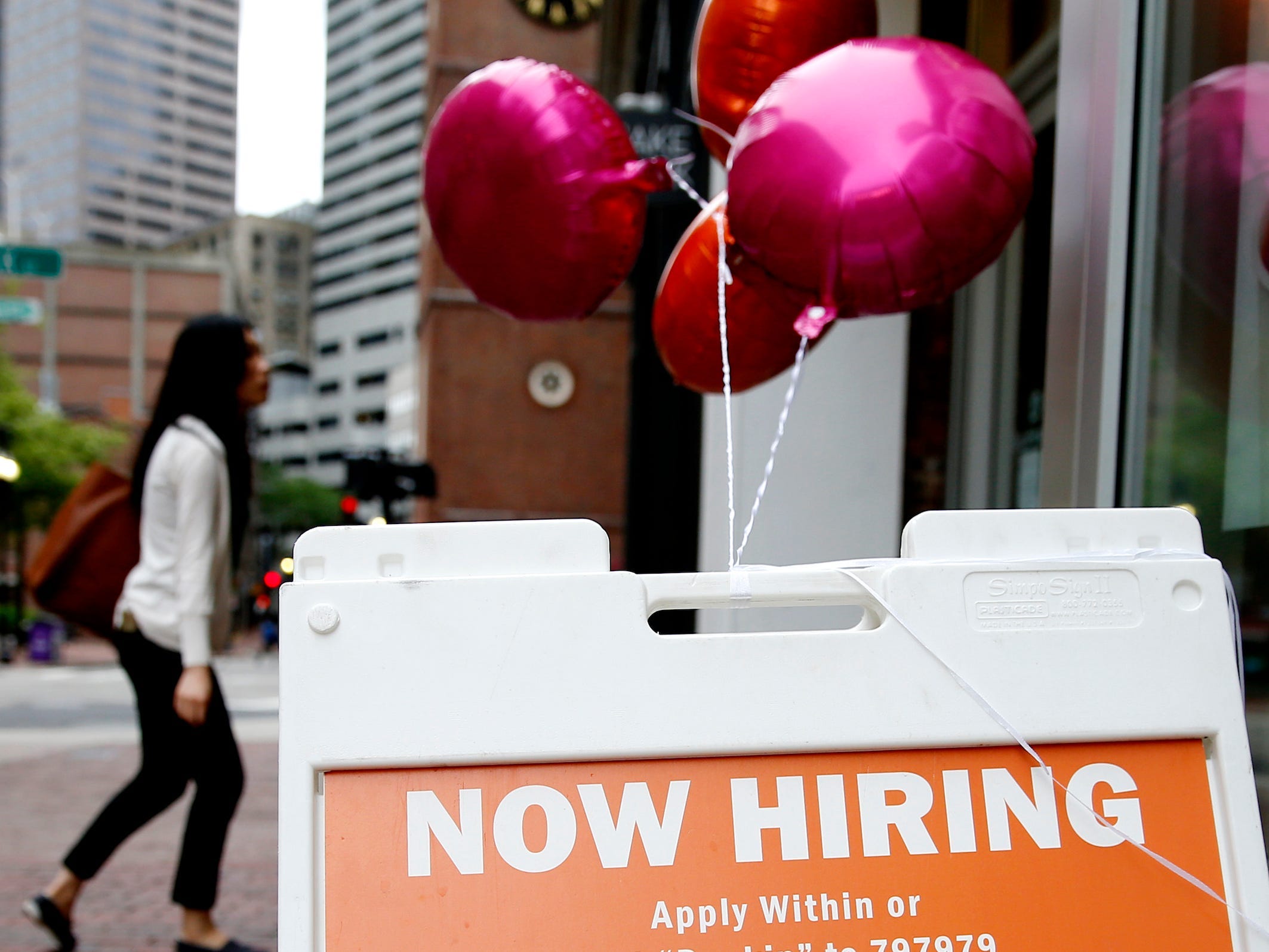
Jessica Rinaldi/The Boston Globe/Getty Images
- JPMorgan estimates 36% of workers haven't returned to work because they have a financial cushion.
- Unemployment, stimulus checks, and rising home values have boosted savings for many households.
- Still, the median balance for lower-earning households is only about $1,000.
The tight labor market could be at least partly explained by a larger-then-usual financial cushion among American workers.
That's according to new estimates from JPMorgan Private Bank, which dug into the reasons behind the ongoing labor shortage, an issue that has become a stalemate of sorts between workers and employers: Businesses across the US have blamed a lack of desire to work, while workers say they're unwilling to accept low-paying jobs, no benefits, or mistreatment at the hands of customers amid a competitive labor market.
But the 7.5 million "missing workers" from the US workforce have led to questions about how those workers are subsisting without participating in the labor market.
One reason may be that millions of workers can survive financially without a job right now: JPMorgan estimates that 36% of unemployed Americans, a plurality of the "missing workers," are choosing not to go back to work because they have more money now than they did at past jobs.
As of September 1, there were still 2.7 million people out of the 5.3 million receiving unemployment benefits who have more money coming in than they did at their previous jobs, JPMorgan estimates.
Pandemic-era enhanced unemployment benefits began expiring this past summer, and the federal program that provided an additional $300 per week for the unemployed ended on September 5. While that led more people to start looking for jobs, JPMorgan found, it didn't lead to more people participating in the workforce.
It's not just unemployment benefits that's boosting savings for many Americans. According to The New York Times' David Leonhardt, many US households, particularly lower-earning families, have more of a cushion than they did in the past due to a combination of unemployment, government stimulus checks and child tax credits, and rising home values and stock prices.
In fact, July 2021 data from the JPMorgan Chase Institute found that the median US household had 50% higher cash balances compared to 2019. For lower-income families, that balance has grown even more: The bottom quarter of households in terms of earnings has seen their cash savings grow 70% over the last two years.
Still, the median balance for those households is only about $1,000, according to CNBC's Greg Iacurci. Plus, most of the stimulus programs started during the pandemic have ended, along with the extra money in unemployment. Household savings will eventually run out, likely nudging people back toward the workforce.
"People might feel with a little extra buffer on hand, that they have a little more time to wait," Fiona Greig, co-president of the institute, told CNBC. "They don't have to find a job this moment."
What's your reason for leaving your job or staying out of the workforce? Contact this author by email at [email protected] or by Twitter direct message at @averyhartmans.

